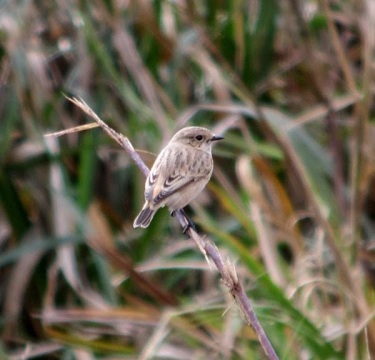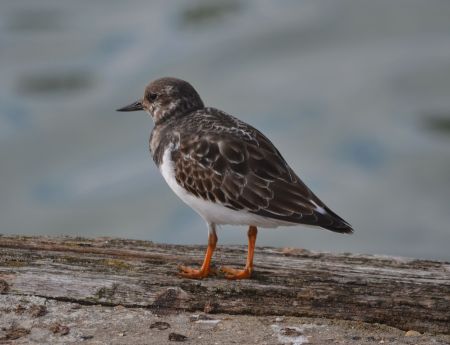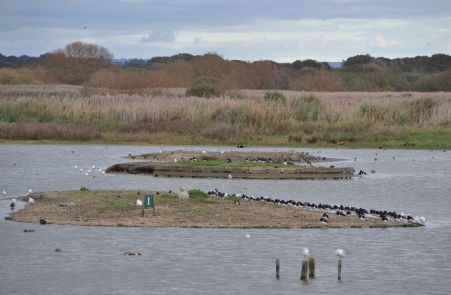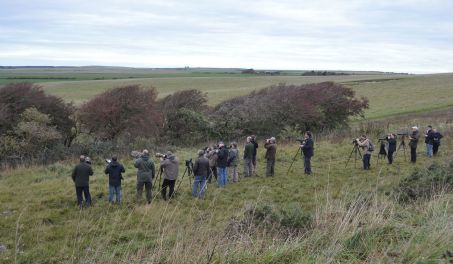This was an easy spot. As soon as I arrived on site in the early afternoon, several people standing on the ramp to the new Meadow Hide were already on the bird. The immediate impression was of just how pale this recently separated species is, as Oxonbirder Gnome’s picture (below) from earlier in the week shows. The first-winter bird was moving around an area with a lot of straw-coloured vegetation, blending in with it’s background as it perched on one stem or another. Well, might as well add another one after reaching the all-important 300! A pair of regular Stonechat were active nearby for comparison.
Titchfield Haven NNR, managed by Hampshire County Council, must be one of my favourite wildlife havens. It has a very pleasing ambience with little of the in-your-face populism that the RSPB’s professional fund raisers impose at their own comparative sites. Yes I appreciate that conservation charities rely in part on donation income and there is not much money in birders. But I just like going to nature reserves to observe wildlife and feel there must be a better way of conducting things than what has become the norm. This reserve achieves that balance and also holds fond memories of a March 2010 visit when I gained four British lifers. Those were Firecrest, Mediterranean and Yellow-legged Gulls, and also Velvet Scoter a little to the north on The Solent. Red-breasted Goose (Jan 2011) and Brown Shrike (Sep 2013) have been further life-list additions in this area of Hampshire.
After seeing the Stonechat I wandered around for a while. It was high-tide and a small flock of Turnstone were roosting in the adjacent Hill Head Harbour. I was able to capture another common wader close-up (above) to add to those taken at Oxford’s Farmoor Reservoir earlier in the autumn. Then I enjoyed a scan around from the Meon Shore Hide (below), where a selection of gulls and waders were either feeding or roosting, before embarking on the 80-mile drive home. This had been a most excellent day.




